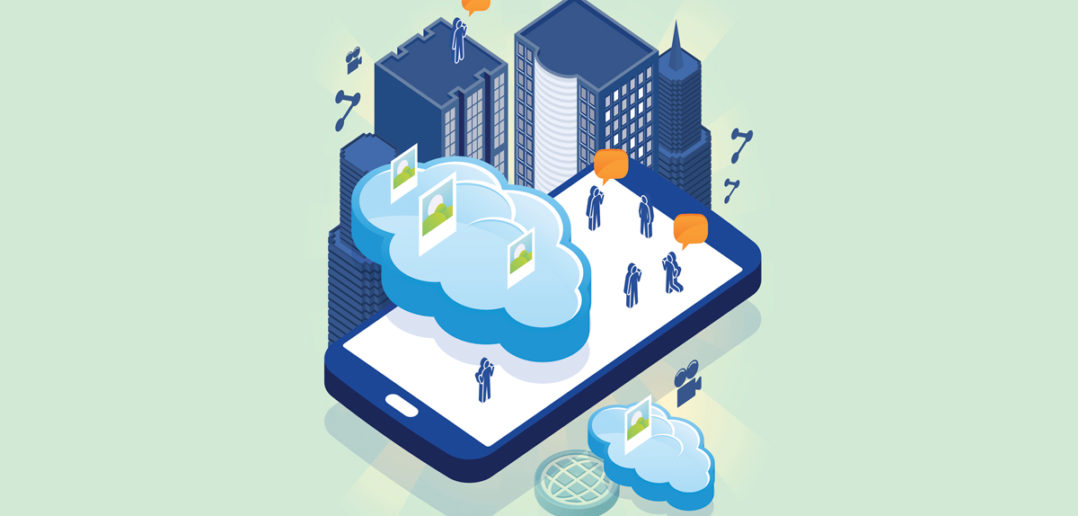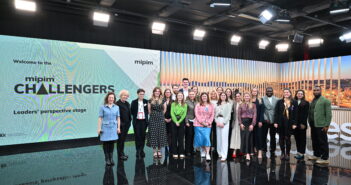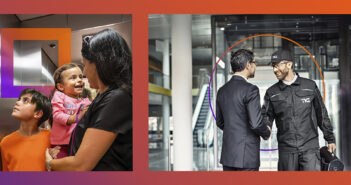Your day likely starts with a technology-heavy ritual that includes scrolling through email via your smartphone, and with an additional swipe, effortlessly checking the day’s weather. Perhaps you’re traveling on business so you ask your phone where the nearest coffee shop is located and set off using GPS to address your nagging caffeine fix.
All of this happens without much thought or effort, and in many ways, we’ve come to take this level of convenience and visibility into our surroundings for granted.
When you apply this to the world of work, perhaps to your job as a facility executive or manager, should this seamless and effortless use of technology suddenly stop? The answer is “no,” but that’s different from the reality of a lot of the software and systems currently used to power buildings and offices. Regardless, employees are coming to expect the same mobility, ease-of-use and simplicity they find on their personal smartphones and tablets. And the building industry has shifted accordingly; the same concepts and principles that make consumer products intuitive and indispensable have bled into facilities management technology.
Call it the Apple-isation of the industrial world.
Fortunately, this is not change for change’s sake. Facility professionals who embrace this trend and the underlying tenets — improved data mining, visualisation and user experience — can help improve processes and operations to drive business and operational success.
They have good reasons to turn to new and improved ways to perform their job: consider the shifting and inherently difficult role of the facility manager. By very definition, a facility manager keeps routine watch and control over multiple systems, processes and activities within a facility. However, the role is becoming increasingly difficult as facility teams shrink and facility managers are tasked with doing more with less — all while managing increasingly diverse systems and many different types of data.
These challenges add more layers to an already complex role. In addition to managing multiple, diverse systems and processes, facility managers must also deal with and respond to issues like security threats and risks made only more complex with growing cyber threats to our digital-heavy world.
Fortunately, as issues arise, so too are new and improved ways for facility professionals to respond appropriately and in a timely manner, thanks to technology.
Connecting the building space
The Internet of Things (IoT) and booming connectivity are fundamentally transforming what buildings are, and what they can do. No longer are buildings simply four walls and a roof. Thanks to the IoT and connectivity, buildings can be organisational assets and drive bottom-line benefits. Building-related technologies that draw from the collective power of IoT devices, cloud applications and the deep domain expertise of facility managers add up to create a valued asset. Such tools help organisations take advantage of the internet and all of the different sensors and endpoints in a building to help transform what it can do for an organisation, and the value it can provide.
These technologies and services help to deepen the connection between buildings and their occupants — from employees and visitors to building managers — to enhance how they operate and the experiences they offer those within them.
Building technologies in action
For an office employee, these technologies might include taking advantage of an app that allows him or her to instantly indicate if the surrounding area is too hot or cold, or to securely move about the workplace with the touch of a screen. For a facility manager, it could also mean using an app, but one that provides real-time facility performance notifications about building equipment to reduce the impact of critical incidents.
Additionally, for a building’s service and maintenance crew, tapping this type of service approach could mean less time spent manually checking building equipment—an often daunting task for multi-facility campuses—and instead focusing maintenance activities where they can have the most impact on overall building performance, saving time and money in the process.
Hit the ground running
Intuitive design can deliver other rewards as well, such as reducing system training time to speed on-boarding and minimise operator error. The goal is to make the learning curve slight, if not erase it altogether. Imagine a building management system that’s only accompanied by a short start-up guide. The technology would no longer be the exclusive domain of facility personnel. Operations and management teams would also be able to easily access and understand data such as energy use and security alarm patterns, turning the building into a driver of efficiency and business continuity.
This improved ease-of-use factor also has ramifications for a rapidly evolving workforce. Retiring facility professionals possess a deep level of expertise and institutional knowledge, including system know-how. Intuitive systems and technologies can help bridge this gap and fill the knowledge void as newer workers come on board, ensuring technology remains an enabler — and not a roadblock.
Enhanced productivity and performance
Smart buildings can exist without a well-designed user experience, and a number of building functions and processes certainly happen automatically as a result of intelligence and integration. However, layering on technology to help drive an enhanced user experience can provide the holistic, actionable and intuitive view one needs to derive maximum value from a building’s performance. Whether benefiting productivity in a government facility, monitoring crowd levels in an airport line to help determine the necessary staffing, or helping enhance security in a hospital, keeping the user experience in mind can help improve even the most seemingly well-run buildings to deliver that much more value.
Buildings are critical to a business and can help it meet its strategic objectives when the right tools and technologies are in place. Today, the consumerisation of building technologies is helping facilitate these improvements, enabling facility executives and managers to truly put their buildings to work and help meet organisational goals.
Alastair Reynolds will be at MIPIM UK this October to talk about the big innovation challenges to face in the real estate industry.
Top photo © ryccio/GettyImages



